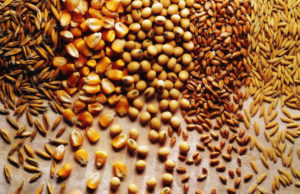 Grain futures advanced on Monday, corn increased to the highest level in seven weeks, as exports from US, the top producer, increased.
Grain futures advanced on Monday, corn increased to the highest level in seven weeks, as exports from US, the top producer, increased.
On the Chicago Board of Trade, corn futures for March delivery rose by 0.9% to trade at $4.3813 a bushel by 15:46 GMT. Futures hit a session high at $4.3862 per bushel, the strongest level since December 12th, while day’s low was touched at $4.3362 per bushel.
The grain increased 3.05% last month, marking the first monthly advance since May. Corn lost nearly 40% in 2013, the steepest annual drop on record amid expectations the global output will surge to 966.9 million tons in 2013-2014 season, boosted by record production in the US, the world’s top producer.
A report by the US Department on January 31st, revealed that the US exported 110 000 metric tons of corn to Spain for delivery by the end of August, accompanied by shipments of 127 000 tons and 119 888 tons to unknown destinations.
Corn drew more support by weather forecasting models that called fro mostly favorable weather in major global producing areas. DTN.com reported on February 3rd that the hot and drier period in Brazil will continue during at least the next seven days, which will deplete the soil moisture and will increase crop stress. The dry weather trend in the northernmost corn and soybeans areas is expected to favor early harvesting, while soil moisture will be beneficial for late-filling crops.
Pollinating corn and developing soybeans in central Argentina will be favored by episodes of showers and thunderstorms during the next seven days. However, the website reports that storms will be so strong, that some local flooding is expected.
Overall, beneficial weather conditions are expected in South Africa. The soil moisture will be recharged by showers and thunderstorms, which will favor the corn crop. However, local flooding may also occur in the corn growing areas.
Elsewhere on the grains market, soybeans futures for settlement in March rose by 1.28% to trade at $12.9862 per bushel by 15:51 GMT. Prices touched a session high at $12.9962 per bushel, the strongest since January 21st, while day’s low stood at $12.7838 per bushel. The oilseed settled last week 0.17% lower.
Wheat up as well
On the Chicago Board of Trade, wheat futures for settlement in March added 0.85% to trade at $5.6075 per bushel by 15:53 GMT. Prices jumped to a session high of $5.6262 per bushel, while day’s bottom was touched at $5.5412. On January 29th, prices touched $5.5075 per bushel, the weakest since July 14th 2010, to settle the week 2% lower.
Wheat slumped 22% last year, marking the largest annual decline since 2008, on expectations for a record global output of 712.7 million tons, according to data by the US Department of Agriculture.
DTNs February 3rd forecast called for a new round of below-normal temperatures over the Midwest. However, during the next seven days, no subzero Fahrenheit temperatures are expected in the soft red winter wheat areas. There is some adverse impact on crops from the moisture in the form of snow, rain and ice, excluding areas of extreme icing, where the percentage of damaged crops will be much higher.
Meanwhile, according to the website, snow will cover the Southern Plains wheat areas, before temperatures fall well-below normal during the week, especially over the north and central growing areas. Temperatures in these areas will drop significantly below zero Fahrenheit, but the snow cover will probably insulate the crop.





